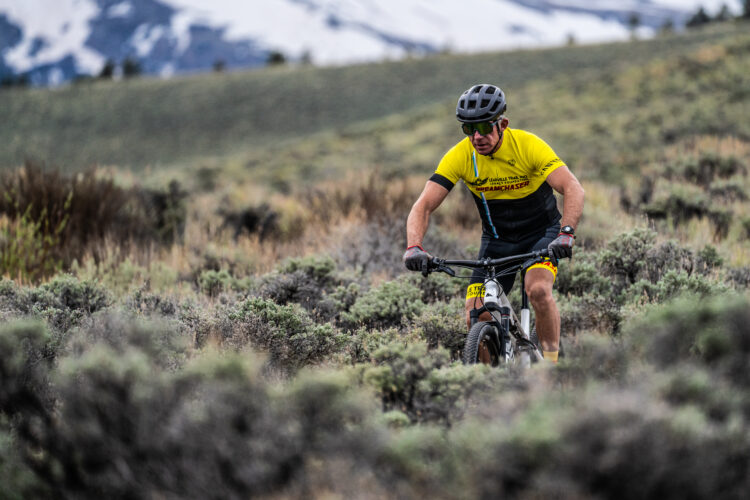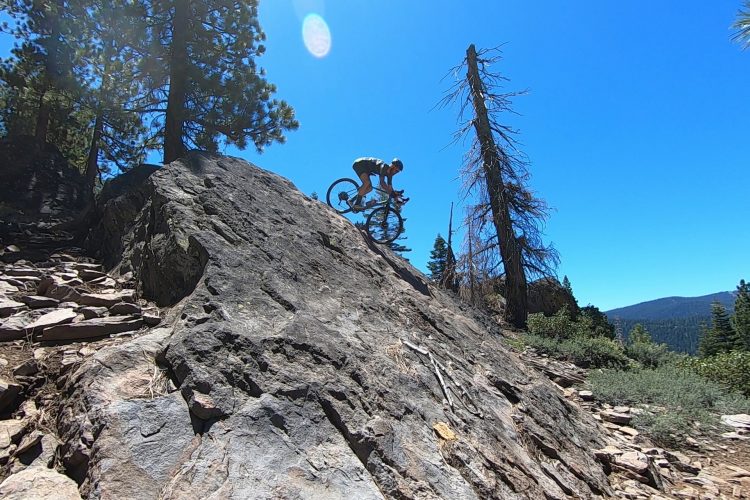
The Leadville Trail 100 is one of the most difficult mountain bike races on the planet. The race starts at over 10,000 feet in elevation and reaches a peak of 12,600 feet. Trying to maintain energy, oxygen, and composure for over 8 to 12 hours and 100 miles, results in a notable amount of DNFs (did not finish) every year.
Leadville also happens to be one of the least technical mountain bike races out there. The climbs can be steep and endless, but much of the course is made up of dirt road and doubletrack with a small amount of actual singletrack. In Leadville, an athlete’s bike can make a huge difference in their result.

Why Leadville is the perfect drop bar course
Cross-country athlete Dylan Johnson grew up in North Carolina mountain biking with his dad and soon started racing, focusing on 100-mile endurance races. While basically everyone uses a cross-country, full-suspension mountain bike or hardtail at Leadville, the idea to equip his hardtail mountain bike with drop bars for the 2023 race came after competing at the event a year ago.
“To me, it’s one of these races that kind of falls in this gray area between gravel racing and mountain bike racing,” said Johnson. “I think the only reason why almost everyone shows up on a traditional cross-country mountain bike is because it’s advertised as a mountain bike race and it’s historically been raced on mountain bikes.”
There are some exceptions. Athletes in the past have raced the course on gravel bikes and up until this year some athletes were equipping their mountain bike handlebars with aero bars. Johnson was one of them in 2022.
“That particular rule change was what probably pushed me even further to doing the drop bars because without aero bars, it’s even harder to get in an aerodynamic position with normal mountain bike bars.”
After racing Leadville last year, he experimented with a new setup for the Chequamegon 40 mountain bike race in Hayward, Wisconsin. Unfortunately a thunderstorm opened up before the race started and turned the course into a mud pit, throwing the need for a fast, aerodynamic position out the window.

Dropping in
But Johnson was committed to using a drop bar bike for this year’s Leadville and when August approached, he got serious about training with what he believed was the ideal setup: His Factor Lando hardtail, with a 100mm Fox 32 Step Cast fork, a dropper post, a 36-tooth chainring, and drop bars. It may have been a better bike for Leadville, but it wasn’t a seamless transition.
“It definitely took some getting used to,” said Johnson. “I mean, the month leading up to Leadville when I figured out that I was in fact going to ride the drop bar bike, I did pretty much every single ride on that bike and I was oftentimes going and riding trails on that bike. And these were trails that were more technical than anything I was gonna see in Leadville and would have definitely been faster and more fun on regular bars, but I was just trying to get used to the bars.”
There were two course sections he was concerned about; the Powerline and Columbine descents. They aren’t exactly technical, but they can be fast and a little loose.
Johnson finished 17th with a time of six hours and 26 minutes. He reviewed his times from last year on the Powerline and Columbine descents with a regular mountain bike and this year with drop bars. Johnson says there might not have been a time difference at all.

“After the race, I’m fully convinced that Leadville is a drop bar course, partially because I ended up getting my fastest time ever down Powerline with the drop bars and my time down Columbine during the race was faster this year than it was during the race last year with the normal bars.”
And though there might be an aerodynamic advantage, Johnson doesn’t believe that Lifetime will take the same route as aero bars and eliminate drop bars from mountain bike races.
“I think they would have an even harder time making the case to ban drop bars, especially since people ride drop bars off road all the time,” he said. “That’s what gravel is and also you have access to your brakes at all times so they would definitely have a harder case.”
The athlete said he didn’t get any flak from other competitors when he showed up to the race with his drop bar hardtail. In fact, some told him they thought it was a good idea. As for whether the addition of drop bars moves the bike into another category, Johnson doesn’t believe so.
“My particular bike setup, everything about it is a mountain bike,” he said. “The frame is a mountain bike, the fork is a mountain bike fork, I had a dropper post on it, I had mountain bike tires on it. Everything on it is a mountain bike except for the drop bars. Maybe if the line is the bars, then I guess I crossed that line. I guess I’d consider it a mountain bike because every component on it was a mountain bike component except for the bars.”
For those considering such a feat, Johnson has a suggestion. It might seem natural to put your hands in the drops on the descents, but he believes it puts too much of your weight too far forward and instead keeps his hands on the hoods during the descents. Just make sure you’ve got strong hydraulic disc brakes.



















